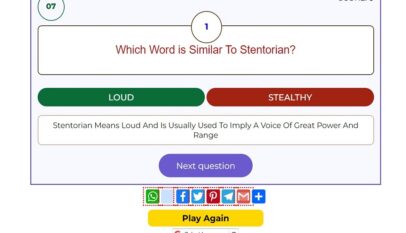
Google’s “People Also Search For” feature, introduced at the beginning of 2018, appears only after a user has clicked on a search result and been get back to the Google SERP immediately. In the “People Also Search For” box, Google adds keywords that users can use in conjunction with the user’s original query, allowing Google to provide results for related searches that the user may not have thought of.
Table of Contents
Where can I get a complete index of “People Also Search For” terms?
Visit Google.com with the add-on installed, then type in your search query. Both widgets appear on the right side of Google when you use any of these search engines. The lower widget displays related search terms, while the top reveals applicable keywords. Google and Bing may choose not to show any of these terms in response to your search because they are obtained directly from the search engines.
In what capacity do People Also Search For keywords that appear in Keywords Everywhere?
Six PASF keywords accompany each SERP result. You can view the six related search terms by clicking the result and then going back to Google. To the right of the search results page (SERP), Google includes a “People Also Search For” widget that lists the top six keywords (along with search volume, CPC, and competitiveness data) for each search result. View the picture that appears at the top of this page.
One must purchase Keywords Everywhere credits before accessing the search volume. As a default, you may restrict use to a certain volume, which will help you save money on subscriptions. The “Load Metrics” button will appear after this is done. Only when the button is clicked will these statistics load.
Searches may also turn up your top local competitors.
One other possibility is that there will be teamwork rather than rivalry. The entities don’t need to be familiar with one another for there to be a search value link. Your research into search engine results pages will affect your content approach.
Organic search results are frequently ineffective at assisting potential purchasers in gaining access to the information they want. The purpose of this feature is to make it easier for users to find the information they’re looking for. Anxiety levels should drop when Google offers viable alternatives in a timely fashion. Further, marketers need to act rapidly. The success of a marketing campaign typically hinges on the quality and quantity of its content.
A pop-up window containing a concise answer to the question will appear when a user comes across one of these searches. The source URL is usually included so that readers can access the full text.
According to Google’s ongoing research, keywords that generate many SERP results also have video PAA listings. A multimodal strategy is required due to people’s need for various search results. It would help if you ventured beyond the realm of words and pictures. Optimising media formats such as podcasts, videos, and YouTube is crucial. Therefore, your chances of being featured in PAAs and PASFs improved.
A Knowledge Graph “People also search for” section may be found there (KG). Google users may look elsewhere if they so want. Seeing potential competitors arise in this area might be discouraging when your goal is to dominate the KG. However, it may be used in either direction. Google Business Profile Insights will notice if your company appears in a rival’s KG box. You may finish your knowledge graph faster with structured data, which is only one of its many advantages.
Conversations with search engines will eventually replace traditional queries. Today’s breakthroughs occur when online search tools become more effective at returning relevant results. We need to go further to find out what questions to ask.
Some people even use their phones to do searches.
A whopping 67.3485% of the time, as reported by Rank Ranger, “People Also Search For”, appears on mobile devices. Based on the user’s input, it will quickly provide more information on the results displayed, such as a brief description, images, or text. Further, it may draw attention to the significance of the link between the issue and the material (such as parent, partner, spouse, brother, etc.).
In the meanwhile, “Related searches” will occupy this area.
- Take note of the three dots above the People also search for the box on the right. You’ll learn “These are relevant searches that others have performed” when you click on them. Google elaborates with, “Your search and this result.”
- There are suggestions relevant to your search terms in this result.
- The final paragraph is written in both English and Spanish.
- It’s a search result, not an ad. They are often denoted with the words “Sponsored” or “Ad.”
Plan your People Also Search For SEO strategy. Google’s recent changes to its search engine results page (SERP) structure have made the SERPs far more interactive and informative. Any company owner or SEO expert may use this to their advantage and provide more to their customers.
An adaptable marketing approach will allow you to incorporate new strategies to increase your search visibility quickly. Search engine optimisation (SEO) is most successful when it is part of a larger plan beyond simply achieving first place in search results. Featured Snippets, Answer Cards, and Related Questions/Related Searches that People Also Ask are some of the new dynamic search capabilities. As a matter of fact, for many searches these days, Related Search features appear more frequently than PASF results.
Excellent Search Engine Optimisation (SEO) depends on QA Content.
An ever-expanding topic of content research and development is question-answering (QA) content. New quality assurance methods are appearing rapidly to address various practical problems. The information available to your company through the data may be invaluable. Researching to answer questions requires an up-to-date summary of the questions addressed by your target consumers. It’s vital, but it takes a lot of time.
The technology behind search engines is built on understanding structured and unstructured data. The processing of unstructured data necessitates automatic reading comprehension, information retrieval, and data categorisation. Structured data formats, including relational tables, APIs for defining data, and knowledge graphs, are used by Knowledge-Based Question Answering (KBQA) systems (KGs). Companies looking to improve their image benefit greatly from using Knowledge Graph Question Answering (KGQA).
You may gain customers’ trust more easily by actively seeking answers to their concerns. The most crucial KGQA datasets to input are DBpedia, Wikidata, Freebase, WikiMovies, and evening.
Remember that you can only enter 32 characters into a Google search. Most people don’t waste many words asking for the information they need. They also value concise explanations and reactions. Doing so saves time and makes the material easier to understand and follow.
Complicated problems can be resolved with the help of People Also Search For.
Because of MUM, Google may no longer consider new searches for which unsatisfactory results were previously delivered. It is now easier to find solutions to more problems using the enhanced “similar subjects” shown. Using tools like machine learning, natural language processing, and data graphing, search marketers may determine how search inquiries relate to their content.
It’s important to make content that goes deep for a reason.
People also search for Google answers under the “People Also Asked” boxes, making them a goldmine of knowledge for future writing projects. Relationship nodes in the PASF graph are used to connect these entities. You may learn much about improving your visibility in Google’s search results by analysing their strategies.
Concepts are processed in various ways by different people. A solution that satisfies one group may not be adequate for another, depending on the nature of their enquiry. When people searched for anything, they often looked for related information using the “People Also Search For” boxes.
Google Analytics and Search Console statistics show you what parts of your site people are visiting and what people aren’t. This proves that you can make more significant contributions and provide more insightful comments. Make the consumer the focal point of your content, not your company’s goals (even if it is).
History of “people also search for”
This feature of showing related searches has been around for quite some time. Knowledge graphs have evolved significantly since their inception a decade ago. The new version outsells the old one in both sales and usefulness.
As time has progressed, it now provides results that are very relevant to the initial query. On mobile devices, People also search for choices that tend to be more abundant. Professional research shows that roughly 60% of desktop SERPs and 80% of mobile SERPs have “People also search for” displays. Evidence like this suggests that you shouldn’t pass up this chance.
The People also search for the box that is not consistently located where it should be at the page footer. It appears that Google’s algorithm makes an effort to meet user expectations despite the initial lack of catalogued content. After analysing and readjusting the page’s position, Google’s algorithm returns the results to you. That is to say, we do not expect this to be resolved quickly.
Add Me To Search: List Yourself on Google Using Google’s People cards
Add Me To Search: If your job depends on being easy to find or well-known, like a professi…











